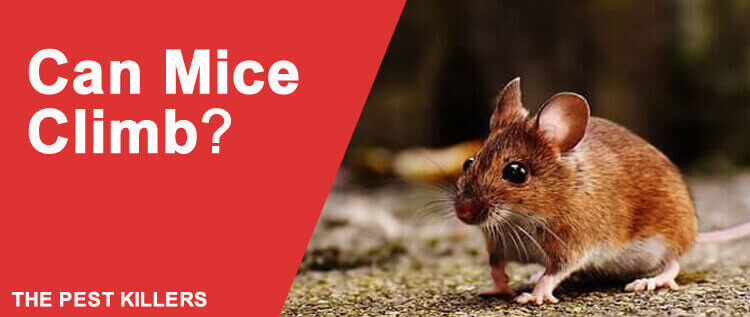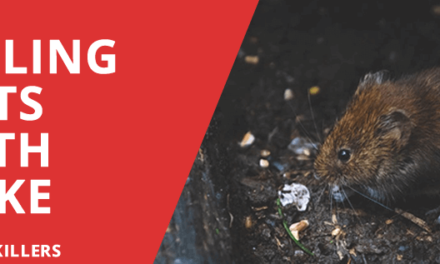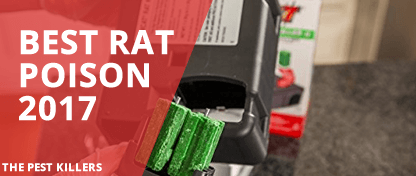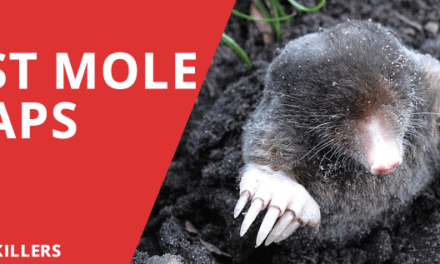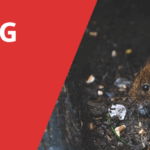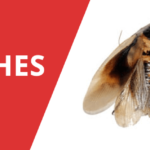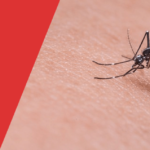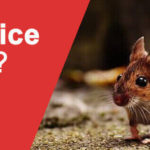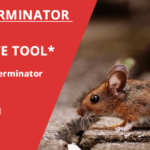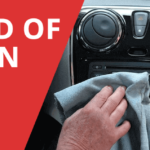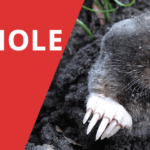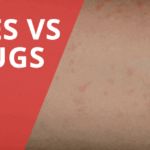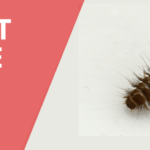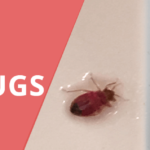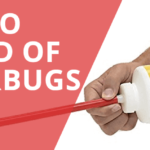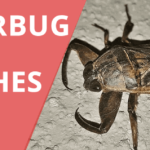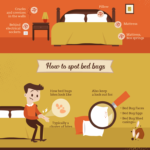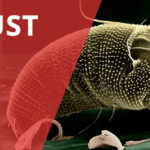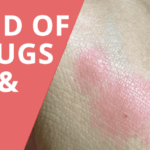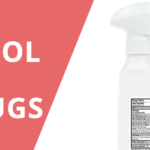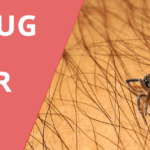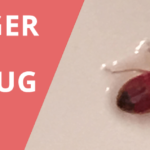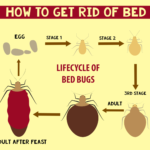Can Mice climb?… Short answer, Yes.
Mice can climb nearly every surface. But we are certain that you will like to find out more about the impressive climbing capabilities of these household pests. So if you want to know how they can enter your home or the size of holes through which they can enter then read on as we have all the answers.
The bone structure of the mouse

Mice are very small yet effective home invaders. An average house mouse weighs only an ounce or even less and is between five and eight inches long. Although they have bones, they are still able to fit through tiny holes. How is that possible? They have a sloping clavicle or collarbone which helps them squeeze through small spaces. The skull of the mouse is its biggest body part. If the head fits through an opening, then the rest of its body will also fit.
The whiskers of the mouse have special sensory abilities. They use these whiskers to determine whether there is enough space for the body to fit through. This is why mice always go nose in first in an opening and never in reverse. They rely on their senses, i.e. sense of smell and touch to navigate tricky places.
Can mice jump as well?
Mice are excellent jumpers and climbers. They can easily climb up furniture, stairs, landscape features, and roughened walls. They will use climbing ivy or trellis to get inside your home. Wires, ropes, and pipes are often used by mice as travel pathways. They do not have a fear of heights and enjoy roaming around the areas near their nests. They will climb in search of nesting materials, food, or to escape from any threat.
Some facts which highlight the athletic abilities of mice are:
- Mice can scale walls up to two meters high
- They can jump up to 24 cm
- They can jump 120cm horizontally and 77 cm vertically
- They can squeeze through holes that are equal to the width of a pencil
How do mice climb?

Mice have tiny claws which help them latch onto any rough or uneven surface including walls that have a particularly porous finish. For example, concrete walls have millions of small air bubbles in them. These bubbles create a rough outer surface. Mice grip these holes using their claws and climb. Sidings, shingles, wood finishing, and stucco provide excellent gripping surfaces allowing mice to climb vertically.
However, most smooth painted and glass walls do not provide the mice with the same opportunity as there is nothing for the mice to grip with their claws. But unfortunately, most homes do not have such walls.
They Are Expert Climbers
Mice also have other ways of climbing. For example, any wiring or electrical cord running alongside a wall provides the mice with an opportunity to climb. Mice grip the cord tightly and use their tails as the balance to keep from falling. As they are small, they can easily climb small cords and wires without worrying about tipping over lamps or other appliances.
Usually, mice move around inside of walls, keeping well out of sight. Walls have wires, pipes, support structures, and insulation thus making it easier for the mice to roam around the house. The insulation in the walls also provide the mice with great nesting opportunities.
| Product Model | Rat Poison Type | Rating | Price |
|---|---|---|---|
Old Cobblers Bait Bar | Bait Bar | 4.4 | |
JT Eaton Bait Block | Bait Bar Trap | 4.2 | |
Neogen Rat Nuggets | Bait Block | 4.0 | |
Tomcat Refillable Rat Bait | Bait Bar | 4.3 | |
MOTOMCO Tomcat Rat Bait | Bait Nugget | 4.5 |
Most Common Mice Hideouts

Mice have an unusual ability to climb which means they can enter your home even through openings that are well above the ground level. Mice can ascend vertical brick walls easily to access the roofs. They can also climb vegetation and vines that grow along the roof line. Mice typically spend summer and spring gathering food for the winter months. This food is stored inside attics and walls. During fall mice activity is at its highest. As temperature drops, they return to their indoor nests.
Although every home is different there are some points of entry that are the same in every home:
Weep Vents
Weep vents are situated on the exterior of a home between bricks. These openings are designed to drain the water that may be behind the bricks and allow the air to pass through the wall to help dry the building structure. These vents are very important for the safety of the building as they extend the life of the brick; therefore they should never be sealed completely. Unfortunately, these openings are big enough to allow mice to enter your home through them. Plastic vent covers are not very durable. They offer very little protection as mice can easily chew through them.
Holes between Building Materials
 Wherever two building materials meet in the layout of the home they provide an opportunity to the mice to find a gap. A usual point of entry for mice is often the gap that exists between soffit and bricks. These gaps are very common, even in new homes, providing the mice with a small gap to slip through easily. As the seasons change houses expand and contract to make these gaps more pronounced. This gap is especially worrisome because it typically extends around the perimeter of the house.
Wherever two building materials meet in the layout of the home they provide an opportunity to the mice to find a gap. A usual point of entry for mice is often the gap that exists between soffit and bricks. These gaps are very common, even in new homes, providing the mice with a small gap to slip through easily. As the seasons change houses expand and contract to make these gaps more pronounced. This gap is especially worrisome because it typically extends around the perimeter of the house.
Other gaps include:
- Siding-Foundation Gap
- Roof-Fascia Gap
- Roof-Soffit Gap
Roof Vents
Mice can climb up to the roof and find many access points. The aluminum and plastic vents on the roof are usually high enough for the mice to get inside the attic. In most cases, a thin bug screen is the only thing that stands between the attic and the mice.
Door and Window Frames
Improperly sealed doors and window frames provide easy access for mice to enter your homes. Doors that are too high off above the ground or hang unevenly allow mice to slip in. Mice can also easily chew loose rubber weather stripping found on the underside of the garage doors.
HVAC and Utility Lines
HVAC and utility lines that exhaust to the outside of the house often run through the exterior walls. Holes cut in the walls for running heating, air conditioning, water, and electrical lines are often very large providing the mice with the opportunity to enter your homes through a gap. Once they are inside, the mice can wander through the house using the holes cut for ducts, wiring, and pipes.
How small can mice get through:
Signs of mice
Although mice and rats look very cute in movies, in reality, they pose a very serious threat to your health and home. Unsanitary droppings, chewed wiring, contaminated food, and risk of rodent-borne diseases can make rodent infestation a very worrying problem. Over time mice have become adept at hiding from us but there are still signs that can alert you to their presence. Your first clue could be the musty, unpleasant smell of rodent urine. Mice are highly territorial, and they mark their area by urinating.
You might also find chewed food containers or rodent droppings, or you might hear squeaking or scratch in the walls at night. If you encounter any of these signs, it is time to make a full investigation.
Where Do You Usually Find Mice?

Mice are opportunistic nest builders. They can be often found in barns, storage buildings, homes, and other indoor structures. Their usual nesting places are:
- Inside upholstered furniture voids or under furniture
- Behind or under kitchen appliances
- Voids in ceilings or walls, especially near heat sources
- Beneath or inside bathroom and kitchen cabinets
- Inside stored cardboard boxes
- In water heater closets
- In secluded corners of garages, attics, or cluttered rooms
- Behind or inside desk or cabinet drawers
How can you identify mice infestation?

If you see these signs you can be sure that mice have taken up residence in your home:
Droppings: The most obvious sign of mice will be the presence of droppings. These droppings are usually rod-shaped and 1/8-1/4 inch long.
Food tampering: Mice are scavengers. They eat all kinds of food they can get access to including grains, fruits, vegetables, pet foods, and meat. They will gnaw through packed food packages to get to the food inside. Regularly check the pet food containers and the pantry to make sure that mice have not gnawed or tampered with the food in any way.
Gathered nesting materials: Mice use various materials to make their homes. These include cardboard, shredded paper, cotton, or insulation. If you see that papers on the desk have been disturbed, then there is a good chance that mice have been going through your papers. They will take anything that is soft.
Chewed Cables: When mice gnaw on anything they leave clean, small holes about 1-1/2 inches in diameter. If you see, gnaw marks on paper or cardboard boxes or find chewed cables you can easily surmise that they have shredded it for nesting.
Gnawing or squeaking noises: Although mice prefer to hide as much as they can they make a lot of noise at night. They squeak quite loudly when they are socializing with each other. You can find their nest by following these noises.
Diseases Caused By Mice

Humans can contract up to 35 diseases spread by mice. These diseases are spread through contact with rodent saliva, feces, urine, or bites. Humans can also become infected by diseases that are carried indirectly by mice. Some diseases that are spread by mice are:
- Rat bite fever
- Salmonellosis
- Leptospirosis
- Rickettsialpox
- Ringworm and tapeworm-causing organism
- Lymphocytic choriomeningitis (aseptic meningitis, encephalitis or meningoencephalitis)
Mice can cause some severe damage as they:
- Leave behind 50-75 droppings every day
- Cause structural damage by nest-building and gnawing
- Trail urine wherever they go because they have no control over their bladder
- Contaminate food with droppings, hair, and urine
- A single female can reproduce up to 35 baby mice each year
Prevention of Climbing Mouse
Prevention and effective control of mice greatly depends on sanitation. Poor sanitation can attract mice in large numbers and helps them to thrive while proper hygiene will reduce shelter and food for existing mice. It also makes traps and baits more effective. It is also essential to eliminate places where mice can find shelter. If they do not see a place to rest, build a nest and care for their young they are not likely to survive in higher numbers.
Step That Can Provide Protection Against Mice
You can help prevent an infestation by taking these simple precautions:
- Use feeders with a catch tray to feed the birds. This will stop the debris from falling on the ground and attracting mice
- Ensure that your garden is free from food especially residue from bird feeders
- Do not throw food waste into the garden
- Make sure that the drain covers are in good repair and right place
- Remove nesting sites by keeping your garden neat and tiny
- Seal gaps around water and heating pipes
- Do not leave household waste where rats can easily access it. Make sure to close the bin lid and if possible keep the bins away from the front door.
- If the wire mesh protection around the house is worn replace it to stop the mice from getting into your home
- Climbing plants allow the mice to get to the roof and from there get inside the house
- Try to cover any gaps under the external buildings like garages and sheds with the help of galvanized wire mesh
Mouse-proof construction

The most permanent and successful method of mouse control is by eliminating all openings in the structure from where the mice can enter. All places especially where food is stored, used, or processed should be made mouse-proof. Meat products and dried grains should be stored in metal canisters, glass jars, and other resealable airtight containers.
Steel wool mixed with caulking compound makes a great plug. Use it to seal any opening larger than 1/4 inch. Windows, screens, and windows should be fit tightly. Seal openings and cracks in building foundations and openings for vents, water pipes, and utilities made with concrete or metal. Plastic screen or sheeting, wood, rubber, and other materials that can be chewed by mice should not be used for plugging holes.
Traps

Traps also help to control mice. It is preferred when the number of mice in the building is small. Its advantages are:
- It’s simple and inexpensive
- Does not rely on dangerous poisons
- Provides physical proof that the mouse is dead
- Permits disposal of the mouse carcasses thus eliminating the foul odor that may occur in case of poisoning.
Baits

Baits are poisons that kill mice. They are readily available in garden centers, feed stores, hardware stores, discount stores and other places where pesticides are available. It is best not to buy unlabeled mice baits from an uncertain source. Read the information label carefully before administering it indoors.
Most baits cause death after they have been eaten many times for a couple of days while some bait may work after just one feeding. There are several baits available, for example, grain baits and block style baits.
Placement of bait and proper distance between them is also very important. Place baits in various locations no more than 10 feet apart. They should be placed close to the mice nests. Use tamper-resistant baits for the safety of your children or pets.
Call An Exterminator
If you are unable to put a stop to the mice population, then you should get professional help and call an exterminator. Choose a well-reputed firm to get rid of mice infestation permanently.

